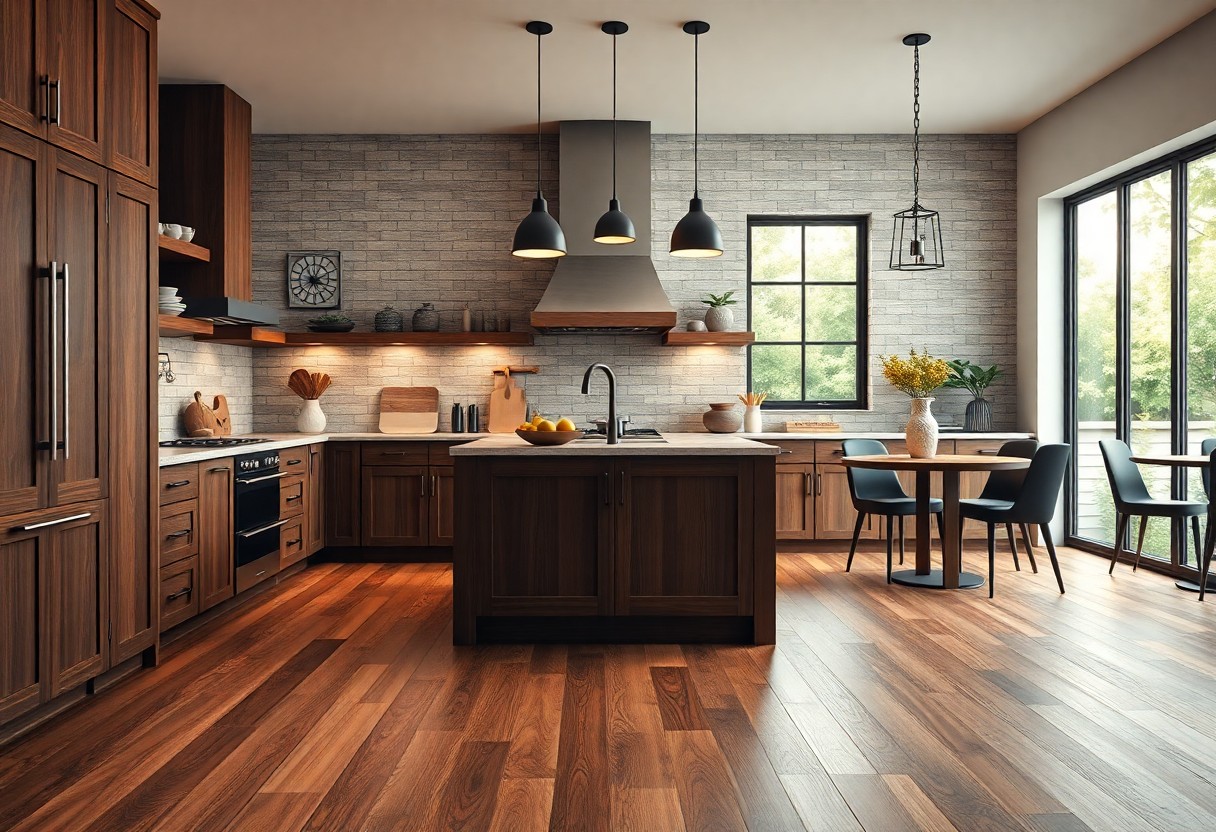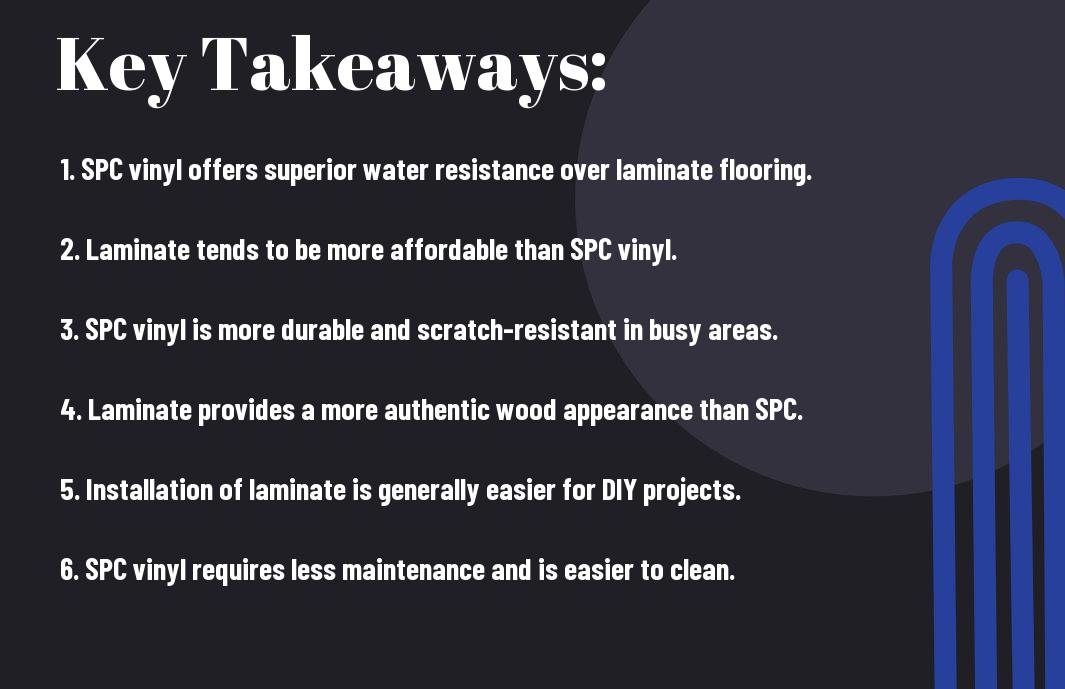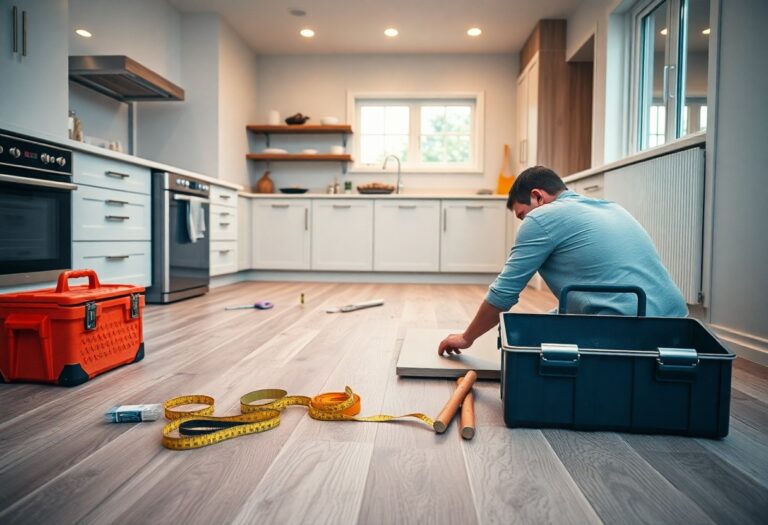Just as you initiate on your flooring journey, it’s necessary to weigh your options carefully. In this guide, we will explore the key differences between laminate and SPC vinyl flooring, helping you to make an informed choice that aligns with your style, durability needs, and budget. With flooring being a significant investment in your home, understanding the pros and cons of each material will empower you to create the perfect environment in your Kitchener space.
The Cost of Beauty: Comparing Price Points
| Flooring Type | Price Range per Sq. Ft. |
|---|---|
| Laminate | $1.50 – $3.50 |
| SPC Vinyl | $2.50 – $5.00 |
Initial Investment: Laminate vs. SPC Vinyl
Laminate flooring typically offers a more budget-friendly initial investment, ranging from $1.50 to $3.50 per square foot. In comparison, SPC vinyl costs between $2.50 and $5.00 per square foot. This price difference can significantly impact your overall project budget, especially for larger spaces. However, it’s important to consider additional factors beyond initial costs when making your decision.
Long-term Value: Longevity and Maintenance Costs
Although laminate may seem like a cost-effective option at the outset, it’s vital to evaluate long-term value through longevity and maintenance costs. Laminate flooring generally lasts around 10 to 15 years with careful upkeep. Meanwhile, SPC vinyl boasts an impressive lifespan of 20 years or more, even with minimal maintenance. The superior resilience of SPC vinyl translates to lower maintenance expenses and a better return on your investment over time.
You might also want to consider potential repairs or replacements down the line. Laminate can be susceptible to water damage and scratches, leading to costly replacements sooner than expected. On the other hand, SPC vinyl provides superior water resistance and durability, allowing it to withstand the hustle and bustle of daily life with greater ease. Choosing SPC vinyl may lead to fewer long-term worries, ensuring your flooring looks stunning for years without heavy costs attached to repairs or replacements.
Performance Under Pressure: Durability and Resilience
Both laminate and SPC vinyl flooring boast impressive durability, making them popular choices for busy households. SPC vinyl, with its rigid core construction, offers enhanced resilience against impacts and heavy foot traffic. In contrast, laminate is designed to withstand wear but may be slightly less robust in high-pressure environments. Your choice ultimately hinges on the specific challenges your flooring will face, from pets to children, and the longevity you expect from your investment.
Scratch and Water Resistance: Which Holds Up Better?
SPC vinyl flooring typically outperforms laminate in terms of scratch and water resistance. The waterproof nature of SPC vinyl makes it a perfect choice for high-moisture areas, such as kitchens and bathrooms. Laminate, while treated for scratch resistance, can be vulnerable to water damage if spills are not quickly managed, putting it at a disadvantage in damp conditions.
Impact of Climate and Environment on Flooring Choice
Your local climate significantly influences the performance of your flooring. Humidity and temperature fluctuations can affect laminate, causing it to warp or bubble, especially in moisture-prone areas. SPC vinyl, however, remains stable under varying climate conditions, making it an excellent option for regions with significant temperature changes or high humidity levels.
Considering Kitchener’s variable climate, SPC vinyl is the more reliable choice; it won’t buckle or swell due to moisture, making it ideal for both humid summers and cold winters. Laminate can be a viable option if installed in controlled environments, like bedrooms or living rooms, but for areas subject to spills or temperature changes, SPC vinyl clearly outperforms. Understanding your environment allows you to choose the right flooring that complements your lifestyle while maintaining durability against the local climate’s demands.
Comfort and Experience: The Underfoot Difference
Choosing between laminate and SPC vinyl flooring often hinges on comfort, as the underfoot feel influences your everyday experience. Laminate flooring offers a more traditional touch while SPC vinyl presents a softer and warmer feel. Your choice may depend on the balance of aesthetic preference and how the flooring engages with your feet throughout various activities in your home.
Sound Dampening and Comfort Levels
While both flooring types contribute to a pleasing aesthetic, SPC vinyl is notably superior in sound dampening. With its dense core and thicker construction, it minimizes noise from foot traffic and falls, creating a quieter environment. In contrast, laminate can generate some echo and sound transmission due to its composition, leading to a slightly less comfortable experience in homes where noise is a concern.
Temperature Regulation and Feel
SPC vinyl excels in temperature regulation, as it stays warmer underfoot compared to laminate. The natural insulation properties of the vinyl prevent it from feeling cold, especially in cooler months, making it a more appealing choice for comfort throughout the year. Laminates can become noticeably cold, which might impact your overall comfort during winter seasons.
Sound Dampening and Comfort Levels
| Type | Sound Dampening |
|---|---|
| SPC Vinyl | Highly effective in reducing noise and creating a quieter space |
| Laminate | Can produce echoes, less effective in sound insulation |
Temperature Regulation and Feel
| Type | Temperature Feel |
|---|---|
| SPC Vinyl | Warmer underfoot and retains heat well |
| Laminate | May feel cold, especially in low temperatures |
Despite its cold tendency, laminate offers unmatched style versatility, making it suitable for those prioritizing design. If comfort and warmth are paramount, SPC vinyl provides a cozy walking surface, promoting a comfortable living environment. Your flooring choice becomes a key contributor to the overall ambiance and feel of your home.
Aesthetic Versatility: Style Options Explored
Your flooring choice can dramatically influence the overall aesthetic of your space, and both laminate and SPC vinyl flooring offer a plethora of style options. With a wide range of textures, patterns, and styles available, you can easily find the perfect fit for your home’s décor, whether modern, rustic, or traditional. Both types mimic natural materials, like hardwood and stone, delivering a visually appealing solution without compromising on practicality.
Design and Finish: Achieving Your Desired Look
Achieving the look you desire starts with the design and finish of your flooring. Laminate flooring typically showcases a high-gloss finish that can brighten your space, while SPC vinyl offers a matte finish that exudes a more natural, earthy vibe. Each provides various surface textures that simulate the feel of wood or stone underfoot, allowing you to create the ambiance you envision in your kitchen or living area.
Customization: Patterns, Colors, and Personalization
Customization options are abundant with both laminate and SPC vinyl flooring, allowing you to tailor the aesthetics to your personal taste. From varying plank widths and lengths to unique designs like herringbone or chevron, you can craft a distinctive look. With countless colors ranging from warm earth tones to cool, contemporary shades, it’s easy to find a match that integrates seamlessly with your existing décor.
The customization options available go beyond just colors and patterns. For instance, laminate flooring allows you to choose from various finishes that can replicate the sheen of polished wood or the rustic charm of reclaimed lumber, offering a unique look for every room. SPC vinyl, on the other hand, often provides designs with enhanced surface textures, making them feel more authentic to their natural counterparts. This level of personalization ensures that your flooring stands out as a reflection of your individual style, making your home truly yours.

The Installation Equation: Ease and Complexity
Installation plays a significant role in your decision-making process. Laminate flooring typically features a straightforward click-lock system that allows for quick and easy DIY installation. On the other hand, SPC vinyl might require a bit more finesse due to its denser construction and leveling requirements. Although both options can be user-friendly, understanding your comfort level and experience with flooring projects can help you determine which choice is right for your home.
DIY Potential: Laminate vs. SPC Vinyl
When considering DIY potential, laminate flooring stands out with its simple interlocking mechanism, making it manageable for those with minimal handy skills. Conversely, SPC vinyl’s heavier and denser material may necessitate more precise cuts and installations, potentially deterring DIY enthusiasts or requiring extra tools for a flawless finish. Your comfort level in tackling home projects will play a pivotal role in which option you ultimately select.
Professional Installation: Cost and Time Considerations
Opting for professional installation may incur higher upfront costs but can save you time and hassle. Expect to pay between $3 and $6 per square foot for laminate installation and approximately $4 to $8 per square foot for SPC vinyl. These figures can vary based on the complexity of the job and local labor rates. Weighing these factors will help you assess the trade-offs between a potentially labor-intensive DIY project and the convenience of hiring a professional.
Hiring a professional installer often ensures a smoother process and a high-quality finish, particularly for SPC vinyl, which may involve specific subfloor requirements. While laminate can sometimes be installed in a day, larger areas of SPC vinyl might take additional time for proper preparation and acclimation. Engaging an expert can also prevent costly mistakes that might arise during DIY efforts, making the initial investment worthwhile for homeowners who prioritize quality and efficiency in their flooring projects.

Conclusion
Upon reflecting on the comparison between laminate and SPC vinyl flooring in Kitchener, you should consider your specific needs and lifestyle. Laminate offers a wide variety of designs and is cost-effective, while SPC vinyl provides enhanced durability and water resistance, making it ideal for moisture-prone areas. By weighing the benefits of each option against your space requirements and aesthetic preferences, you’ll be better equipped to make a choice that enhances your home while meeting your performance expectations.





